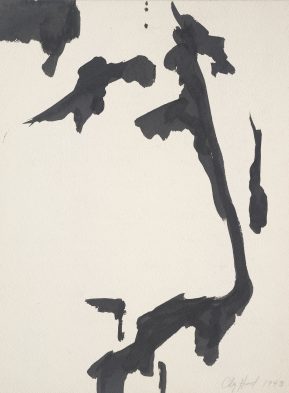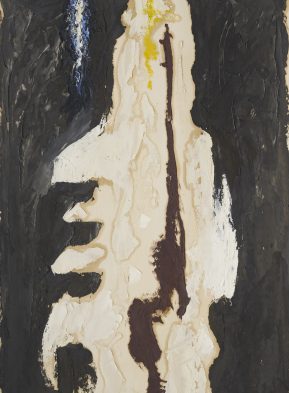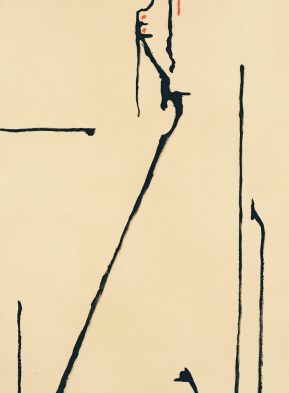
The Richmond Oils
In late 1943, Still moved to Richmond, Virginia, where he took a teaching position at what is now Virginia Commonwealth University. Over the following eighteen months, the artist made roughly one hundred drawings almost exclusively with oil paint. Many of these compositions (PH-480, PH-488, PH-536) later progressed into large paintings on canvas.
These often mysterious works on paper are in fact quite revealing about how Still synthesized various representational forms into abstract lines, profiles, and marks (for example, the suggestion of a head, torso, and stalks of wheat are found in PH-547). On the other hand, many others constitute Still’s most abstract compositions to date (PH-535, for example).
As with his paintings, Still executed many of these drawings with a palette knife rather than a brush, perhaps because a knife produces a more incisive, tactile mark. Still’s paintings emphasize draftsmanship—arguably to a greater extent than those of his Abstract Expressionist colleagues. Silhouettes, crisp dabs of pigment, meticulously traced and sculpted contours, and slender vertical strokes (which the artist called “life lines” to denote their vitality) seem to define the immanence of lurking inner forces.
Citation Information
Chicago
David Anfam, Bailey H. Placzek, Dean Sobel. “The Richmond Oils.” In Clyfford Still: The Works on Paper. Denver: Clyfford Still Museum Research Center, 2016. /worksonpaper/the-richmond-oils-on-paper/.
MLA
Anfam, David, et al. “The Richmond Oils.” Clyfford Still: The Works on Paper. Denver: Clyfford Still Museum Research Center, 2016. 1 Nov. 2016 </worksonpaper/the-richmond-oils-on-paper/>.



























